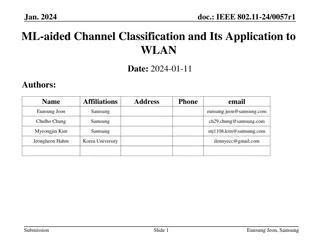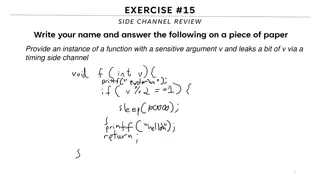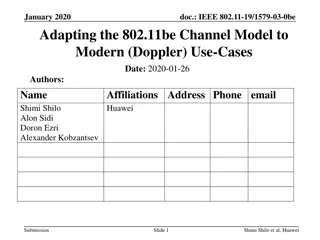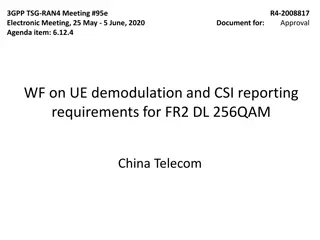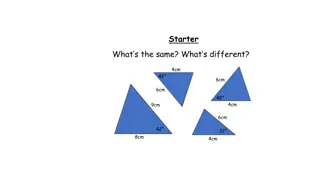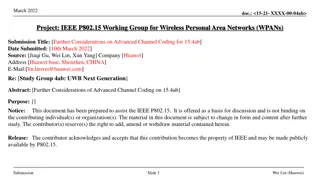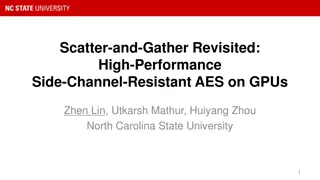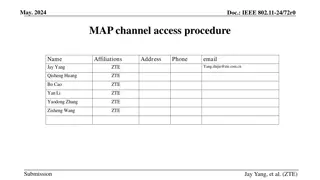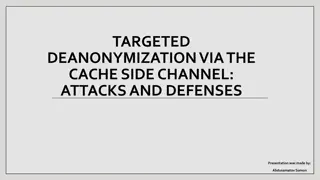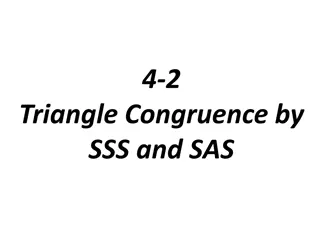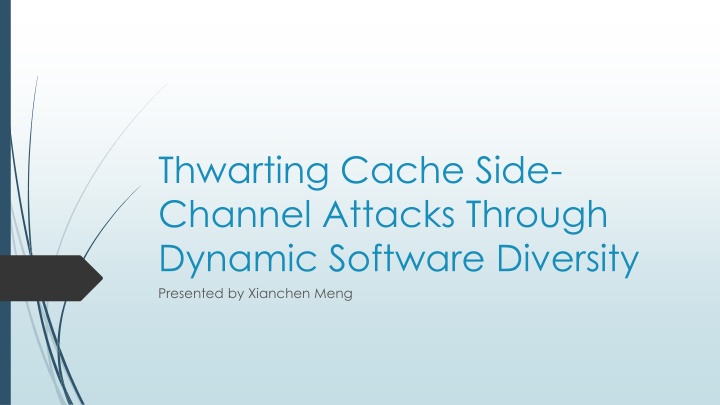
Thwarting Cache Side-Channel Attacks Through Dynamic Software Diversity
Learn about how dynamic software diversity can protect against cache side-channel attacks, including methods, background, examples, motivations, current works, limitations, and novel techniques like control-flow randomization.
Download Presentation

Please find below an Image/Link to download the presentation.
The content on the website is provided AS IS for your information and personal use only. It may not be sold, licensed, or shared on other websites without obtaining consent from the author. If you encounter any issues during the download, it is possible that the publisher has removed the file from their server.
You are allowed to download the files provided on this website for personal or commercial use, subject to the condition that they are used lawfully. All files are the property of their respective owners.
The content on the website is provided AS IS for your information and personal use only. It may not be sold, licensed, or shared on other websites without obtaining consent from the author.
E N D
Presentation Transcript
Thwarting Cache Side- Channel Attacks Through Dynamic Software Diversity Presented by Xianchen Meng
Background Side-Channel Attacks Definition: In cryptography, a side-channel attack is any attack based on information gained from the physical implementation of a cryptosystem, rather than brute force or theoretical weaknesses in the algorithms (compare cryptanalysis). Methods: Timing attack Power-monitoring attack Electromagnetic attacks
Example Different execution time
Background Cache structure
Background Example Attacks
Background Example Attacks
Motivation Since code injection, code reuse, and reverse engineering attacks are all significantly harder against diversified software, the authors propose to extend software diversity to protect against side-channel attacks, in particular cache side channels. artificial software diversity denies attackers precise knowledge of their target by randomizing implementation features of a program.
Current works & Limitations Most existing diversification approaches randomize programs before execution. e.g., during compilation, installation, or loading. Ahead-of-time randomization is desirable Some approaches interleave program randomization with a static method and program execution and the granularity of randomization in these approaches is quite coarse Limitation: potentially allowing an attacker to observe the program uninterrupted for long enough to carry out a successful side-channel attack
Novelty control-flow randomization Avoiding current problems by extending techniques used to prevent reverse engineering such as code replication and control-flow randomization replicate code at a finer grained level produce a nearly unlimited number of runtime paths by randomly switching between these replicas
Novelty Diversifying transformations To vary the side-channel characteristics of replicas, authors employ diversifying transformations. Diversification preserves the original program semantics while ensuring that each replica differs at the level of machine instructions. Combine control-flow randomization with diversifying transformation to counter cache-based side-channel attacks Called dynamic control-flow diversity
Dynamic control-flow diversity begin by choosing a set of program fragments (either functions or basic blocks) to transform clone each chosen program fragment a configurable number of times and use different diversifying transformations for each clone integrate these randomized replicas into a program that dynamically chooses control-flow paths at runtime
Cache Noise Transformation The authors investigated one specific transformation, inserting cache noise, to disrupt cache side-channel observations. This technique is only one example of possible side- channel disrupting transformations. Inserting random memory loads Static: addr = region_base + offset Dynamic: addr = Memory[random_table[i]]
Evaluation Security Evaluation
Evaluation Performance Evaluation
Evaluation Performance Evaluation
Evaluation Performance Evaluation CPU intensive workloads
Quiz 1.what are the limitations of current works? 2. what does dynamic control-flow diversity consist of? 3.what is the principle method of authors work?




